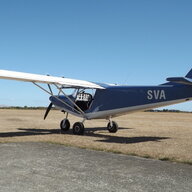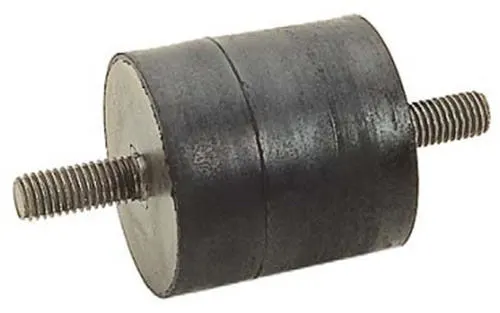-
Posts
3,070 -
Joined
-
Last visited
-
Days Won
26
About IBob
- Birthday 22/04/1948
Information
-
Aircraft
Savannah S
-
Location
Wairarapa
-
Country
New Zealand
Recent Profile Visitors
The recent visitors block is disabled and is not being shown to other users.
IBob's Achievements

Well-known member (3/3)
-
Roundsounds, I watched part of an analysis that included pics from a flight simulator. There was an active display showing the fuel valve/s status. And unless you go through the switches and logic, including the power to those, you cannot say there is no connection between the two systems. In a perfect world, yes. But given what happened, I would not blithely assume that. I would check.
-
No it doesn't Roundsounds. What it actually says is "In the cockpit voice recording, one of the pilots is heard asking the other why did he cutoff. The other pilot responded that he did not do so." It says nothing about anyone observing that switches were in cutoff position. Maybe he saw the valves off in a panel display??? And you're missing the point about the EFAR, but I don't know how to explain it any clearer except to repeat that it quite possibly logs what the automation thinks the switch positions are......not the actual inputs from the switches. And that's a very important difference.
-
The media at large have jumped on 'the fuel was turned off' as one would expect. That leaves us with two possibilities: 1. The fuel levers/switches were indeed turned off. 2. Something downstream of those switches saw them as being turned off. Both possibilities need to be investigated as far as is possible. And for 2, it becomes very important to know where the FDR gets it's info on those switches. Because to investigate possibility 2 requires an inspection of everything from the switches to where the FDR picks up that info. Here I am guessing, but after years of process control work, including setting up a great deal of system monitoring and data logging, I would be surprised if the FDR is looking at the actual outputs from the lever switches. It is far more likely to be looking at some register in the automation that holds (or should hold) the state of the switches. In my opinion........
-
I think folk need to read and digest the whole Interim report to clear away some of the assertions. Some Boeings were fitted with switches without the lever latches. Very unlikely in this case but not impossible. As for retracting the undercarriage: it seems the RAT deployed almost immediately after rotation, with the engines commencing to shut down, after which they were fighting for their lives. They had no 'positive climb'.
-
Okay. I was trying to raise what I see as valid points. But they are hard to explain, so I'll leave it.
-
Which part of finding is not worth anything?
-
Which bit, Facthunter???
-
That's not the case at all, Thruster: My aircraft (for instance) has a little lever that turns a ball valve. The 787 has a switch that provides at least 2 outputs (one for each switch position, Off or Run) and I would lay odds that those inputs go to automation logic that interprets the switch position and makes a decision regarding the fuel valves etc. That logic would also be trying to deal with fault conditions (both inputs on or both inputs off) and deciding what to do then. It is interesting that the switch is reported as taking place immediately after liftoff.......which is also when the logic switches from ground to flight mode. There also seem to be the general assumption that the FDR info is taken straight from the switch. And maybe it is, but it seems likely to me that it is taken after the logic has decided where the switch is.
-
Some may find it easier to read the preliminary report in it's original form. It also has some pics: https://aaib.gov.in/What's New Assets/Preliminary Report VT-ANB.pdf
-
This muddies the waters some: file:///C:/Users/OEM/Downloads/EASA_SIB_NM-18-33_1.pdf And how on earth is this, quote : 'not an unsafe condition that would warrant airworthiness directive (AD)' ????????
-
The prinicipal suggestions that come out of that would seem to be: 1. Due to their mechanical design, those switches cannot be accidentally tripped. 2. For the aircraft to behave as it did (without yawing) they would have to both be operated more or less simultaneously. I did freelance industrial automation work for over 30years. Much of it was quite straightforward, but over half of any program I wrote would be made up of 'what ifs'. That is, how the system should respond in the event of a failure of some part of the equipment or system. (And I always made a point of running that past the actual operators or end users, the reason being that they, not management, were usually the most knowledgeable when it came to the process.) So, those switches are not just a couple of switches wired to fuel valve. My guess would be there will be switches or contacts for both open and shut positions. And that will go to some sort of logic, which operates the valves. And aside from normal operation, the logic has to include what if power is lost to a switch or switches, what if a switch fails etc. Also under what other conditions (if any) are the fuel valves allowed to change state. It would be very interesting to see the actual switch arrangement, circuitry and logic...........
-
Can't remember exactly Skippy, but mine cost very little. They seem to be offered in various combinations, sometimes with other fittings, in little panels that I guess you bolt on your boat or whatever. I contacted the vendor and bought a panel with 2 USB units, discarded their panel and fitted them to mine. Full disclosure: I've never metered or scoped them to ensure they are behaving themselves. One normally powers my Samsung tablet with Ozrunways, the other my uAvionix Ping for ADSB-In.
-
IBob started following Rotax 912 coolant radiator and USB outlet to charge ipad
-
I have a couple of USB panel mount marine chargers. I've had no trouble with them and they seem to do the job. Bought on NZ TradeMe, look like this:
-
ICP use the bobbin type shock mounts, top and bottom. But they can separate: I replaced one recently but I think it was originally mounted in a stressed (not straight) manner.
- 52 replies
-
- 3
-

-

-





